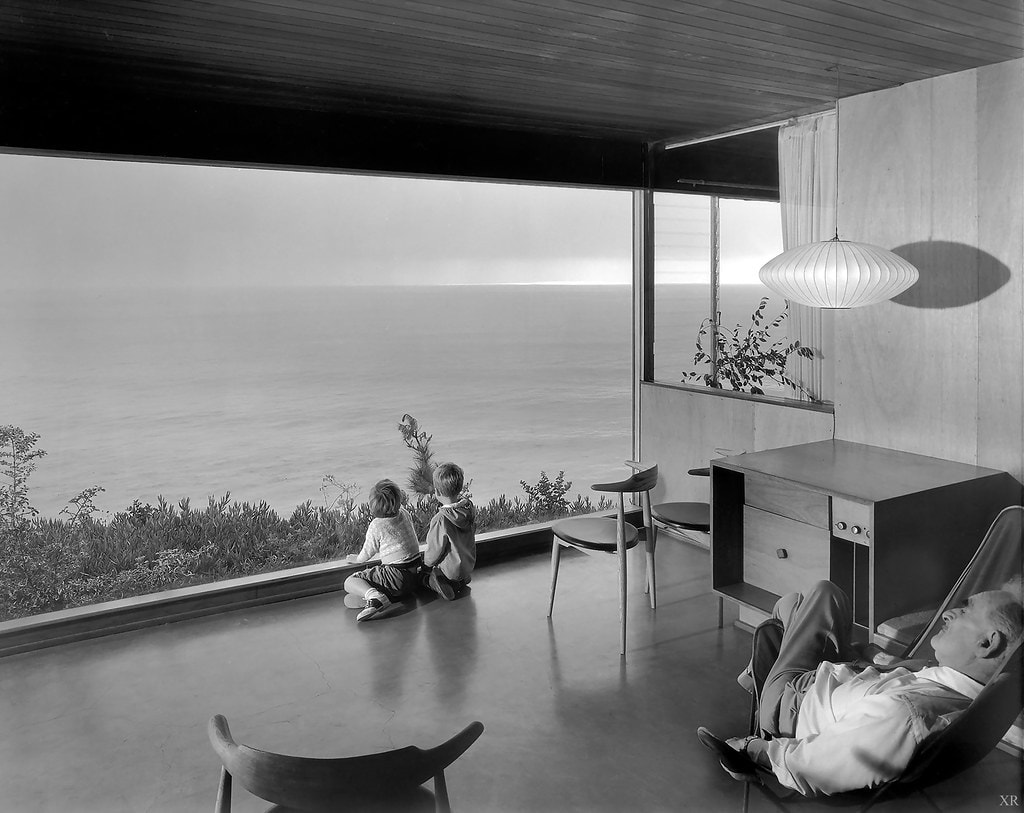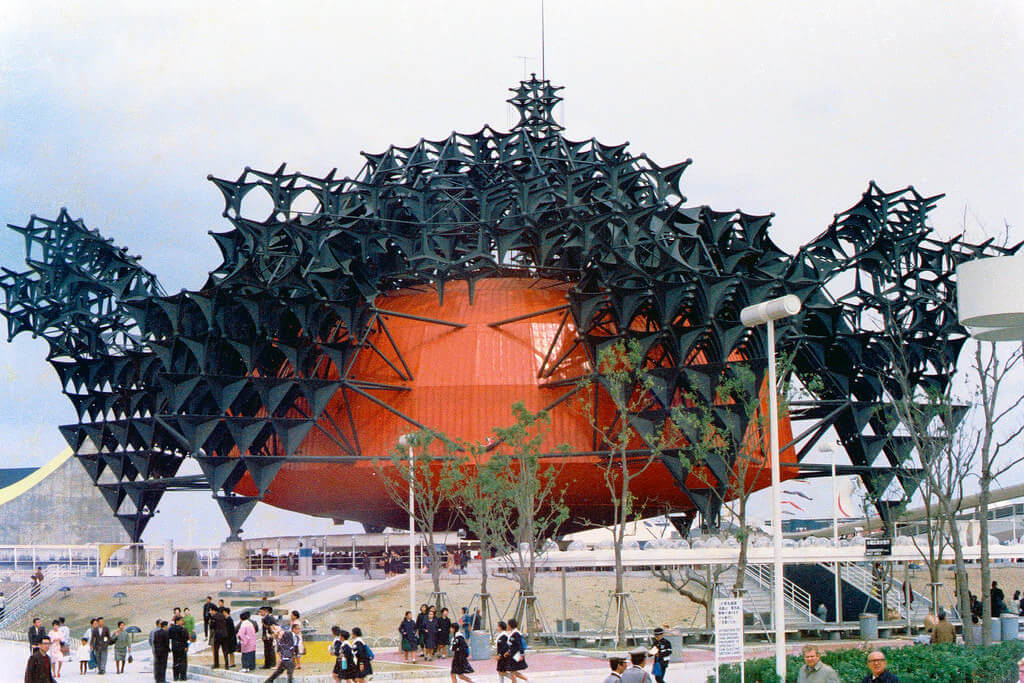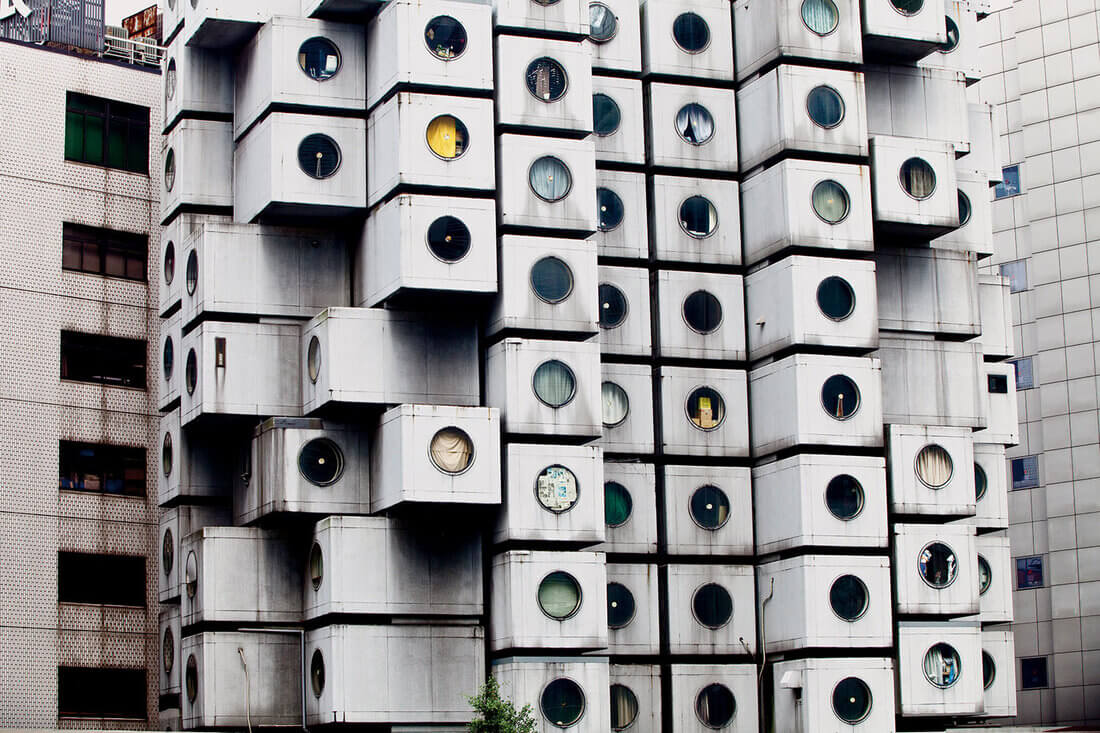Richard Neutra (1892-1970) was born into a Jewish family in the Vienna, during its Golden Age of culture, and made a spectacular career in Southern California. He apprenticed in Erich Mendelsohn’s Berlin office, before emigrating to the US, where he worked for both Frank Lloyd Wright and Rudolph Schindler before establishing his own practice. Neutra was among the key pioneers of California Modernism and designed some of the most glamour homes of the mid-century years. In his residential architecture, technology, function, and landscape, merged into a genuine, local style. His Desert House in Palm Springs (1946) is largely considered the prototype of what became known as middle-class Southern California mid-century Modernism.
By the time Japanese architect Kisho Kurokawa (1934-2007) was born, Neutra was already living in California, and was included in the seminal MoMA exhibition The Intenational Style. At 25, the Japanese architect co-founded the Metabolist Movement, a radical group seeking to address housing, sustainability, ecology, and social infrastructure. His most famous building, still stands in Shimbashi, Tokyo (1972) is the Nakagin Capsule Tower; a
nother masterpiece was his Toshiba IHI Pavilion in the 1970 Osaka Expo. Kurokawa established the Green Party to help provide environmental protection and to support environmentally-conscious business practices.Two architects who were born on April 8th, probably never met, and whose postwar buildings couldn’t have been more different. Once created the ultimate modernist glass boxes, sleek, pristine to perfection, rational, and photogenic. The other charged his buildings with social and environmental contents, creating expressionist buildings of rough materials, that told stories. Both were visionaries who came to shape 20th-century architecture.
Above: Richard Neutra, Wise House, 1957.





